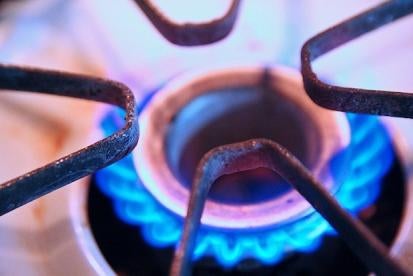As the temperature outside continues its slide into frigid winter weather, the use of furnaces and other heaters fueled by natural gas (NG) or liquefied propane gas (LP) increases. So does the risk of a gas explosion, fire and carbon monoxide poisoning.
There are some basic and inexpensive steps to take to help prevent gas explosions and fires, and to avoid carbon monoxide poisoning.
Regular Maintenance and System Safety Checks by Qualified Professionals
At a minimum, an annual safety check should be performed by a licensed professional of furnace, water heaters, and other natural gas appliances, such as clothes dryers and stoves. This inspection and maintenance should of course be performed sooner if there has been a new appliance installed, or after a move or an event that could have even possibly caused damage to the gas line or appliance.
Professional inspection should also occur during and after home renovations – any time a gas appliance has been removed or disconnected. The failure to properly cap active gas lines accounts for scores of explosions nationally.
The same maintenance and inspection should also be followed for LP gas-using appliances and furnaces. However, there are additional precautions and system safety checks required with LP gas. An out-of-gas call is one such event that triggers a thorough system safety and pressure check.
NFPA 54, known as the National Fuel Gas Code, has been adopted virtually universally and provides definitive standards to follow for gas and gas appliance safety.
Occasionally, simple safety measures and maintenance are not followed and result in a gas explosion and fire, causing serious burn injury or even death. Far too often, gas supplier employees fail to adhere to – or are not trained properly – in procedures promulgated in NFPA 54, causing unsafe conditions. There also instances where gas is delivered into an unsafe, improper or untested system, resulting in sometimes catastrophic gas explosions and fires. Serious burn injuries, other personal injuries, and death can and do regularly result from a supplier's failure to inspect and test LP gas systems when required and prior to gas delivery.
Using a person who is not properly trained or licensed to install or service gas appliances or furnaces is also a regular cause of explosion, fire, and serious burn injury.
Important Legal Issues after a Gas Explosion and Fire
We have represented burn survivors and their families after gas explosions and fire for over 30 years. We have learned firsthand the need to preserve evidence, preserve the scene, and bring nationally-known fire cause and origin expert investigators to the scene immediately. It is crucial to preserve and document the scene and evidence, so that a proper fire cause and origins investigation can occur. NFPA 921 provides universally-accepted scientific procedures and methods to investigate the scene of a likely gas explosion fire.
There are many competing interests that appear immediately after a gas explosion and fire, especially when serious burn and other injuries result. There is almost always an insurance company for either the residence, the gas supply company, or for the remodeler or serviceman who failed to cap a line or properly reconnect an appliance. These insurers have a keen interest in avoiding large compensation payouts. Not infrequently, evidence can be destroyed, altered or simply become missing. Having an attorney who is experienced and knowledgeable with fire investigation and a fire investigator who is not retained by an insurance company on scene may ensure preservation of the evidence.



 />i
/>i

